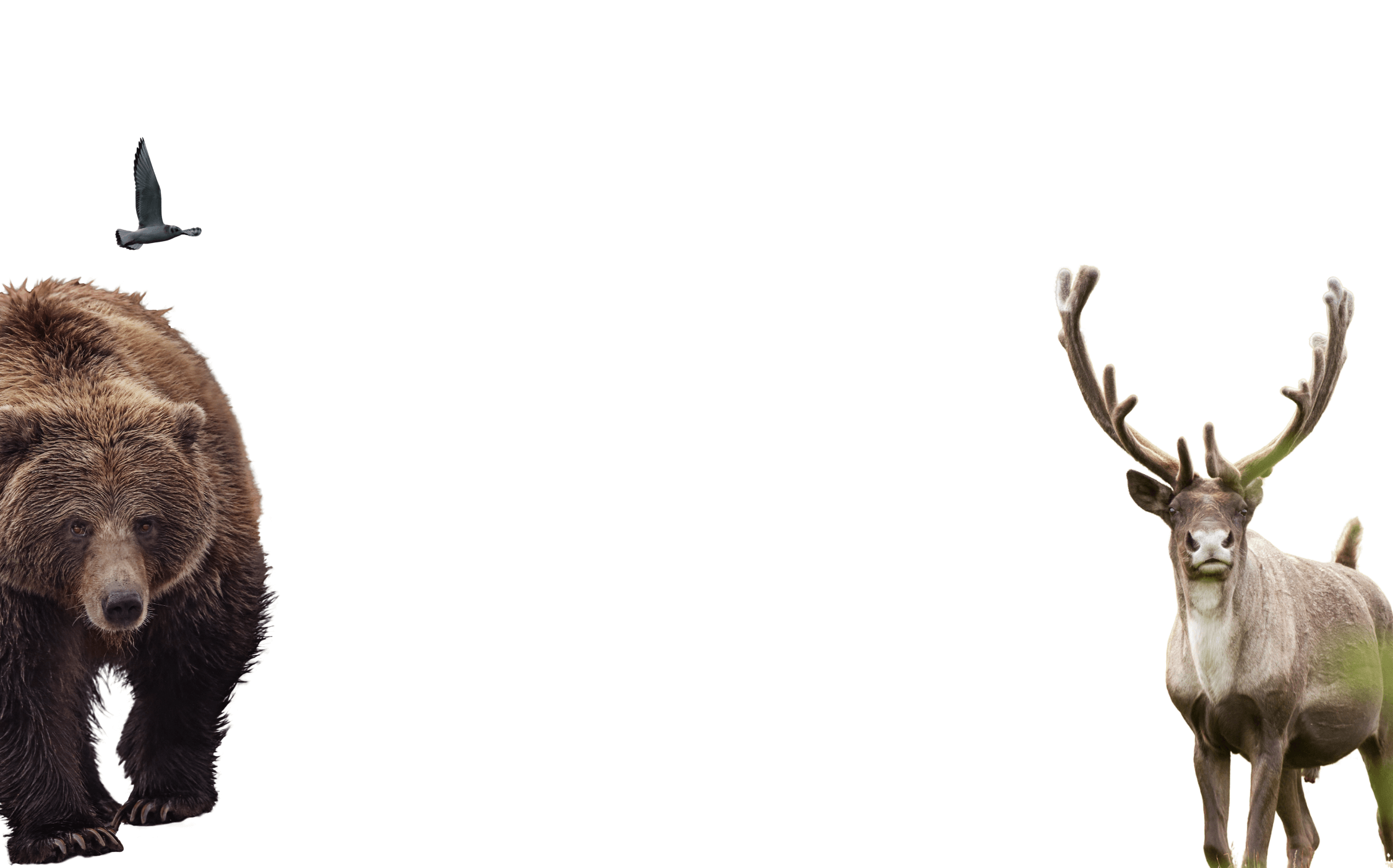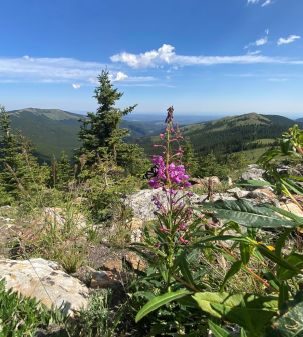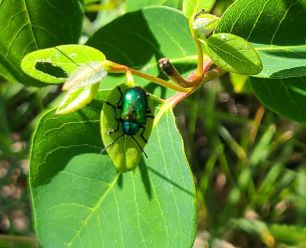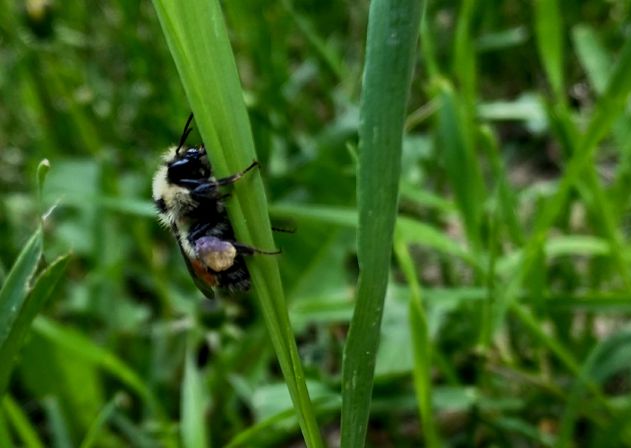
Saving the Bee(tles)
April 17, 2025
- •
- •
- •
What could a pollinator policy look like?
By Kennedy Halvorson
Read the PDF version here.
In fact, the first suspected pollinator was Earth’s favorite type of insect (constituting a quarter of all species on the planet), the mighty beetle, celebrated on the front cover of the magazine. Many animals provide pollination services, including flies, moths, butterflies, ants, wasps, birds, bats, rodents, lizards, primates, and marsupials — bees just happen to be the most common and often effective floral visitor. They are also the most researched for my purposes here, but please keep in mind these many other wonderful pollinating species!
“If one could conclude as to the nature of the Creator from a study of creation, it would appear that God has an inordinate fondness for beetles.” – John B. S. Haldane
You know their plight. You’ve heard about their threats, declines, and their ecological and economic importance. You know their requirement for robust ecosystems and global food security. People love pollinators, more specifically, bees. It’s hard to think of another type of organism with such widespread public support. Just one iteration of the #savethebees hashtag has over 2.9 million posts on Instagram, and while the phrase is unfortunately often complicit in “bee-washing” campaigns, it helpfully illustrates my point. If anecdotes aren’t enough, research reverberates the same message; the public overwhelmingly thinks pollinators are important and should be protected.
Much like you, I agree. I love pollinators. I think they are the coolest. I read all the same articles, consume all these repetitive messages; “how to save the bees”, “10 ways to protect pollinators”, “make your garden bee-friendly this summer”, “grow these native plants pollinators will love”, “join no-mow May”, etc., etc., etc. These articles will reiterate the same things, these actionables for the individual. And we’re doing it, we’re becoming more educated on pollinator issues, we’re planting bee gardens with native flora, leaving leaf and plant litter for nesting and habitat, going chemical-free, pulling household pesticides out of the lawn care rotation. All these things are meaningful – at a local level, I promise your pollinators appreciate it, and importantly, engaging with nature in such an intimate way is just generally good for your wellbeing. However, it is not enough.
But what more can we do? I said I read all the same stuff you do, and that’s honestly a bit of a fib – I used to, and now I am sick to death of it. How much more awareness can we possibly raise? People in Canada know about saving the bees, and while they don’t always have the facts straight on pollinator issues, they’ve got the passion. We are past awareness. The threats faced by pollinators are occurring at much higher levels that need to be tackled systemically, and those ideally positioned to do so (or at least expected to do so by the public), are the federal and provincial governments.
Bee-washing: a type of greenwashing which advertises a product or initiative as supporting wild bee or pollinator populations without the appropriate due-diligence and research.
Government pollinator policy
Native pollinators are not explicitly addressed at either the federal or provincial levels. In fact, most mentions of the word “bee” within government policy imply non-native honey bees, or in some cases, are not referring to bees at all. Some indirect applications of existing laws, including the federal Health of Animals Act and the Plant Protection Act, or the provincial Animal, Apiary/ies, or Bee Acts, could help native pollinators. Depending on their interpretations, it could help control the spread of diseases and invasive species, provide standards of treatment and care, or ensure managed species are regulated, monitored, and documented. However, the acts are not currently interpreted to do so.
Under the Species at Risk Act, the majority of pollinator species have had no formal assessment. Of the 16 assessed and present in the province, 63 percent are without and/or overdue for recovery strategies. No action plans have been completed. Assessments of the status of pollinator species at the provincial level are non-existent. This reflects existing taxonomic biases in conservation research and efforts; insects are consistently underrepresented, underappreciated, and threatened. In the absence of explicit native pollinator protection legislation, our wild bees, flies, moths, butterflies, beetles, and other pollinators are left without real targeted support from our governments. And on a global context, that means we are trailing the curve.

A police-car moth (Gnophaela vermiculata) drinks nectar from a fireweed (Chamaenerion angustifolium) plant in the alpine meadows of Jumpingpound Mountain. Photo © K. Halvorson
Canada lags its peers
In North America, the US and Mexico have had national pollinator protection strategies in place since 2015 and 2021 respectively. Further abroad, 34 nations including Belgium, Colombia, England, Ireland, France, Nigeria, Norway, the Netherlands, and Spain have enacted similar plans and initiatives to protect pollinators. Pollinator legislation also need not be restricted to just the federal level; in the U.S., 32 states have their own subnational plans coordinated within the country’s national strategy, with more developed each year. With such a large body of international examples to draw on, there should be no reason Canada can not endorse similar policies — if anything, the process should be easier, with the ability to learn from spearheading nations’ challenges and successes.
Current evaluations of international policy find the main challenges include effectively coordinating efforts and establishing appropriate funding, expertise, and resources. Knowledge gaps on species and ecosystems, a lack of monitoring, evaluation, and reporting programs, and an inflated focus on non-native, managed honey bees to the detriment to wild bee species and pollinator taxa, are common criticisms across these existing national strategies.
The adage “the best time to plant a tree was 20 years ago. The second best time is now” rings true here — while we should have had national or provincial pollinator strategies in place years ago (RIP Ontario’s Pollinator Health Action Plan), Canada’s tardiness has afforded the opportunity to avoid some of these pitfalls and establish robust legislation today. Additionally, both international and national experts have already supplied guiding documents in the form of white papers and peer-reviewed literature, outlining potential frameworks for Canada to adopt; the groundwork is done, it is simply up to us to act on it.
Sidebar: Ontario Pollinator Health Action Plan: In what was an unprecedented commitment by a provincial government in Canada to protect pollinators, the strongly supported, but ultimately ill-fated plan was enacted in 206 to support healthy populations, ecosystem resilience, food system sustainability, and the economy.
The quiet termination of this plan two years later came as a shock and violated protocol, best summarized by the Office of the Auditor General of Ontario: “[The] Agriculture Ministry did not notify or consult the public on this decision through the Environmental Registry, as required under the Environmental Bill of Rights, 1993. As a result, pollinator researchers and the public were unaware that the Pollinator Plan and its targets had been cancelled.”
What could a pollinator policy look like?
The core principles of an effective Canadian pollinator policy should:
- Focus on the health of wild, native pollinator communities
- Be supported, feasible, and science-based
- Overcome Canada’s decentralized system of governance
International and Canada-specific policy recommendations already exist to inform the development of pollinator protection legislation and identify four major threats that must be addressed: habitat loss, non-native species, pathogens, and pesticides. The recommendations for Canada were developed by over thirty experts of diverse professional and personal backgrounds, who considered both the utility and feasibility of almost a hundred proposed solutions for protecting pollinator populations, as well as knowledge gaps and research priorities. While some potential policies are specific to the federal level, many recommendations can and should be adopted and adapted at the provincial scale; regional planning to compliment a national strategy is the ideal scenario.
For pesticides, policy recommendations that were both strongly supported and considered very feasible by experts included eliminating the cosmetic use of pesticides for homeowners, municipalities, and other sectors within the province, and reducing the number of household insecticides available for purchase by the average, untrained person. Establishing a bee-friendly certification for farms, adopting targeted crop insurance programs, increasing investments in Integrated Pest Management extensions, and making technicians specialized in pollinator best management practices available and accessible would support and protect producer livelihoods while better protecting pollinators.
To help address pathogens, experts recommended regulating the use, distribution, and disposal of commercially managed pollinators. Colonies should be independently tested and confirmed as pathogen-free, and movement should be closely tracked and reported. Excluding honey bees who are already widely introduced, use of other managed pollinators like bumble bee, leafcutter, and mason bee species should be limited to within their native ranges. All precautions must be taken to ensure reproducing individuals do not escape into native habitats.
Policy required to combat habitat loss could take a variety of approaches; in an agricultural context, increasing producer access to seeds free from pesticide applications and incentivizing the adoption of less-intensive practices would create landscapes more accommodating to pollinators. Supporting native plant nurseries and regional seed libraries/exchanges while eliminating invasive plants from marketed seed mixes would improve biological and genetic diversity and help restore habitats. The experts also were highly supportive of initiatives that protect and expand habitat, particularly within pollinator hotspots. Planting native flower mixes along anthropogenic corridors like roads and utility lines to increase ecological connectivity for pollinators is another great example of how policy could help address habitat loss.
Finally, good policy would address non-native species and their impacts, increasing regulations, monitoring, and reporting on movement of materials potentially containing exotic species from other regions, and subsidizing the removal of invasive plants already established.

A police-car moth (Gnophaela vermiculata) drinks nectar from a fireweed (Chamaenerion angustifolium) plant in the alpine meadows of Jumpingpound Mountain. Photo © K. Halvorson
Alberta’s next advantage
All conservation initiatives in Canada face the similar challenge of navigating the complicated governmental responsibilities and jurisdictions outlined in our constitution. Because of their comparatively high degree of legislative authority over natural assets, the provinces are key players in the pursuit of strong biodiversity protections. In our case, Alberta is a prime candidate for the country’s first successful pollinator protection legislation.
Almost 10 million acres or one-fifth of the total cropland in Alberta grow field and greenhouse crops that either require or benefit (through increased yield and nutrients) from pollinators. The farm gate value for greenhouse crops alone was estimated at over $140 million in 2023. Canola, the largest field crop requiring pollination, has yearly exports valued in the billions. Ensuring strong protection for pollinators is not just a good environmental choice, it’s an economic one, as providing sufficient and effective pollination for these crops represents both larger and higher quality yields for Alberta farmers, and reduced input costs required to maintain ecological and farm health. Imagine for a moment the worst-case (and very real) scenario – in places where pollinators have declined substantially, hand pollination by humans is required for crop production. Laborious, time-intensive, and costly, it can not be overstated what a loss the freely provided services of pollinators would be to Alberta agriculture.
From an ecological perspective, over a third of Canada’s bee diversity, 375 species, exists in Alberta. The province is also home to 2,700 beetle, 2,000 fly, and 2,500 butterfly and moth species, which means increasing pollinator protection here is meaningful for biodiversity at a national scale. While not every single one of these species functions as a pollinator, they fulfill many other important ecological functions that are similarly threatened by a lack of protection. According to the Wild Species: The General Status of Species in Canada in Alberta, 22 percent of beetle, 16 percent of bee, 23 percent of fly, and 11 percent of butterfly and moth species are considered vulnerable to critically imperilled.
Alberta’s native pollinators coevolved with regional plants; together they are foundational to the function of ecosystems throughout the province. Over 135 million years ago, flowering plants began appearing in the paleontological calendar; their rapid rise and diversification to become the largest group within the plant kingdom is owed to the incredibly effective mutualism that is animal pollination. One of the oldest and most successful relationships on Earth is that of pollinators and flowering plants, and were it not for their coevolution, the landscapes we enjoy today would likely look much different. Protecting pollinators protects Alberta’s wilderness.
Enacting robust pollinator protection does not just serve wild populations; Alberta is home to 40 percent of the nation’s honey bee colonies which would also stand to benefit. Charismatic though they are, honey bees are non-native and managed like livestock for their pollination abilities, and their production of honey, wax, and other bee products. Similar to other livestock species, disease prevalence and transfer are a key concern in their husbandry and represent the greatest threat to beekeepers’ livelihoods. Increased regulation and reporting on the movement of managed bees around the province is beneficial as it can improve rapid reporting and response to disease outbreaks, limiting the extent and severity of impacts in both honey bees and native pollinator populations. Reducing stressors like pesticides and other agrochemicals would keep honey bee populations healthier, which in turn allows them to fight off parasites and disease better and reduce transmission into native populations. Increased floral availability and diversity reduces competition with wild species and benefits honey bees as well, who much like us, need variety in their diets.
Alberta needs, deserves, and wants robust pollinator protection. Six cities, representing over 1.7 million Albertans and 38 percent of the province’s population, are already registered Bee Cities, demonstrating strong support at the municipal level for pollinator conservation and protection. The agricultural, economic, environmental, and societal co-benefits of adopting the policy recommendations into formal legislation would be substantial for the province, and it is an action that is desperately needed.
What can you do?
I would never deter anyone from doing what they can locally. So, reduce how much you mow, stop using pesticides, switch to a native lawn, don’t swat, etc., please keep up that good work! At the same time, consider contacting your provincial and federal representatives. Send them all the articles you read (including this one), emphasize how much you love pollinators, and highlight their immense importance to our landscapes and societies. Most critically, demand their legislated protection.
